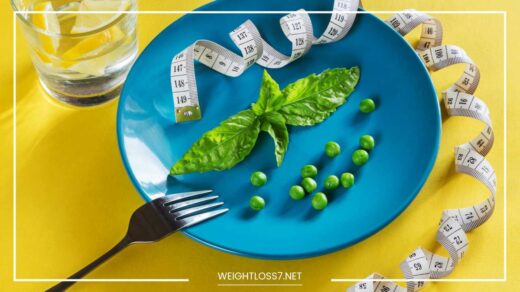How to Get Rid of Belly Fat Quickly

Get Rid of Belly Fat
Unveiling the Belly Fat Myth: Sustainable Strategies for a Sculpted Core
The quest for a flat stomach is a universal human desire. We see it plastered across magazine covers and relentlessly advertised in weight loss supplements. But the truth is, belly fat reduction is a complex issue with no magic bullet solution.
This blog post dives deeper than the surface-level “quick fixes” often peddled. We’ll explore the science behind belly fat accumulation, debunk the myth of spot reduction, and empower you with sustainable strategies for a healthier, trimmer you.
Delving into the Two Faces of Belly Fat:
Not all belly fat is created equal. There are two main types lurking beneath your midsection:
- Subcutaneous Fat: This sits just below the skin, the jiggly fat you can pinch. While unsightly, it doesn’t pose a significant health risk.
- Visceral Fat: This deeper layer of fat wraps around your organs and is linked to a greater risk of chronic diseases like heart disease, type 2 diabetes, and even some cancers.
While both contribute to your waistline, targeting visceral fat is crucial for improved health and a slimmer appearance.
The Culprits Behind Belly Fat Gain: A Multifaceted Approach
Several factors contribute to belly fat accumulation, making it a multi-faceted battle. Here are the key players:
-
Dietary Culprits:
- Sugar and Refined Carbs: Sugary drinks, processed foods, and refined carbohydrates like white bread and pastries cause blood sugar spikes. This triggers insulin release, a hormone that promotes fat storage, particularly around the belly.
- Unhealthy Fats: Saturated and trans fats found in fried foods, processed meats, and some dairy products can also contribute to belly fat accumulation.
- Portion Distortion: Today’s supersized portions can lead to overconsumption, even if the food itself isn’t unhealthy.
-
The Exercise Conundrum:
- Sedentary Lifestyle: A lack of physical activity reduces calorie burning and slows down your metabolism, making it easier to gain weight, including belly fat.
- Focus on Cardio Alone: While cardio is important, relying solely on it might not be enough for significant belly fat loss. Strength training builds muscle mass, which boosts your metabolism and helps you burn more calories at rest.
-
The Stress Factor:
- Chronic stress elevates cortisol levels, a hormone that promotes fat storage, particularly around the midsection. The “fight-or-flight” response triggered by stress can also lead to unhealthy food choices.
-
Other Influences:
- Genetics: Some people are genetically predisposed to store more fat around the belly.
- Age: As we age, metabolism naturally slows down, making weight management, including belly fat reduction, more challenging.
- Sleep Deprivation: When sleep-deprived, your body produces more ghrelin (the hunger hormone) and less leptin (the satiety hormone), leading to increased cravings and potential weight gain.
The Flawed Allure of Quick Fixes: Embracing a Sustainable Path
The internet is overflowing with fad diets and intense exercise programs promising rapid belly fat loss. However, these approaches are often unsustainable and can be detrimental to your health. Here’s why a long-term, holistic approach is key:
- Fad Diets: A Recipe for Yo-Yo Dieting: These diets often restrict entire food groups or rely on unrealistic calorie deficits, leading to nutrient deficiencies, muscle loss, and ultimately, weight regain.
- Extreme Exercise Routines: While effective in the short term, these routines are often difficult to maintain and can lead to injuries. They also don’t address the underlying factors contributing to belly fat gain.
Crafting Your Belly-Busting Blueprint: A Symphony of Healthy Habits
Now that we’ve debunked the myths, let’s build a plan for sustainable belly fat reduction and overall health improvement:
Diet: Your Internal Architect
- Prioritize Whole, Unprocessed Foods: Focus on fruits, vegetables, and whole grains. These foods are packed with nutrients, fiber, and keep you feeling fuller for longer, reducing cravings.
- Embrace Lean Protein Sources: Protein helps you feel satiated and builds muscle mass, which boosts metabolism. Choose lean protein sources like grilled chicken, fish, beans, and lentils.
- Healthy Fats are Your Friends: Include healthy fats like avocados, nuts, seeds, and olive oil in your diet. These fats promote satiety and support overall health.
- Limit Sugary Drinks and Processed Foods: These foods are devoid of nutrients and high in calories, promoting unhealthy weight gain, including belly fat.
- Practice Mindful Eating: Pay attention to your hunger and fullness cues. Eat slowly, savor your food, and avoid distractions while eating. This promotes mindful consumption and prevents overeating.
Exercise: The Body in Motion
- Find Activities You Enjoy: Consistency is key, so choose activities you find fun. This could be brisk walking, swimming, cycling, dancing, or team sports. Aim for at least 150 minutes of moderate-intensity cardio or 75 minutes of vigorous-intensity cardio per week.
- Incorporate Strength Training: Strength training builds muscle mass, which boosts your metabolism and helps you burn more calories at rest. Aim for strength training exercises 2-3 times a week, targeting major muscle groups. Bodyweight exercises, free weights, or resistance bands are all effective options.
- Embrace HIIT (High-Intensity Interval Training): Short bursts of intense activity followed by recovery periods can be an efficient way to burn calories and promote belly fat loss. Start slow and gradually increase the intensity and duration of your intervals.
Lifestyle Tweaks for a Flatter You
- Prioritize Sleep: Aim for 7-8 hours of quality sleep each night. When sleep-deprived, your body produces more ghrelin (the hunger hormone) and less leptin (the satiety hormone), leading to increased cravings and potential weight gain.
- Manage Stress: Chronic stress can wreak havoc on your waistline. Practice stress-management techniques like yoga, meditation, deep breathing exercises, or spending time in nature.
- Stay Hydrated: Drinking plenty of water helps with digestion, reduces bloating, and keeps you feeling full. Aim for 8 glasses of water per day, adjusting based on your activity level and climate.
- Cook More at Home: This allows you to control ingredients and portion sizes, reducing intake of unhealthy fats, sugars, and sodium often found in restaurant meals. Experiment with healthy recipes and involve family and friends in the process.
- Read Food Labels: Be mindful of added sugars and choose products lower in saturated and trans fats. Look for whole food ingredients and a moderate calorie count.
- Don’t Skip Meals: Skipping meals disrupts your metabolism and can lead to overeating later. Aim for regular meals and healthy snacks throughout the day to keep your metabolism running smoothly.
Building Resilience: A Mindset Shift for Lasting Change
Sustainable belly fat reduction is a journey, not a destination. Here are some tips to cultivate a healthy mindset:
- Set Realistic Goals: Aim for gradual, sustainable weight loss (1-2 pounds per week). Dramatic weight loss is often unsustainable and can be unhealthy.
- Find an Accountability Partner: Having someone to support you and celebrate your victories can make a big difference. It could be a friend, family member, or a fitness buddy.
- Track Your Progress: Keeping a journal or using a fitness tracker helps you stay motivated. Track your weight, measurements, dietary choices, and exercise routine. Celebrate non-scale victories like increased energy levels, improved mood, and better sleep.
- Don’t Deprive Yourself: Allow yourself occasional treats to avoid feelings of deprivation. This will help you stay on track in the long run.
- Make it a Lifestyle Change: View these changes as a way to improve your overall health and well-being, not just for quick results. When you focus on creating healthy habits you enjoy, they’re more likely to become a permanent part of your life.
By adopting a sustainable approach that combines a healthy diet, regular exercise, stress management, and adequate sleep, you can effectively reduce belly fat and achieve a healthier, happier you.
Remember, consistency is key. Be patient with yourself, celebrate your progress, and enjoy the journey to a flatter stomach and a healthier you. You are not just shrinking your waistline; you are investing in your long-term health and well-being.
Advanced Strategies for Belly Fat Reduction
Now lets delves deeper for those seeking to optimize their belly fat reduction efforts. It explores advanced strategies and considerations:
Dietary Nuances for Belly Fat Fighters:
- The Glycemic Index: This index ranks carbohydrates based on their impact on blood sugar levels. Choosing low-glycemic index foods like whole grains, legumes, and fruits can help regulate blood sugar and insulin levels, reducing belly fat storage.
- Fiber Powerhouse: Fiber promotes satiety and digestive health. Include soluble and insoluble fiber in your diet. Soluble fiber (found in oats, flaxseeds, and fruits) slows down digestion and keeps you feeling fuller for longer. Insoluble fiber (found in whole grains and vegetables) aids in digestion and elimination.
- The Macronutrient Ratio Experiment: Experiment with different macronutrient ratios (carbs, protein, fat) to find what works best for you. Some individuals may benefit from a slightly higher protein intake to promote satiety and muscle building. Consulting a registered dietitian can help you determine the optimal macronutrient ratio for your goals.
- Mindful Snacking: Choose healthy snacks that curb hunger pangs and prevent overeating at meals. Examples include fruits with nut butter, yogurt with berries, or vegetable sticks with hummus.
Exercise Refinements for Belly Fat Blasters:
- HIIT Variations: Explore different HIIT variations like Tabata training (20 seconds work, 10 seconds rest) or circuit training (multiple exercises performed back-to-back with short rest periods) to keep your workouts dynamic and challenge your body in new ways.
- Cardio Intensity: Consider incorporating both moderate-intensity cardio and high-intensity interval training (HIIT) into your routine. Moderate-intensity cardio helps with overall calorie burning, while HIIT provides an afterburn effect, boosting metabolism even after your workout.
- The Neglected Core: Don’t neglect core exercises. While they won’t directly burn belly fat, a strong core improves posture, stability, and can enhance the effectiveness of other exercises.
Lifestyle Hacks for a Flatter Midsection:
- Intermittent Fasting: This eating pattern cycles between periods of eating and fasting. While research on its effectiveness for belly fat loss is ongoing, some studies suggest it may be beneficial. Consult a healthcare professional before attempting intermittent fasting.
- Strength Training Specificity: Consider incorporating exercises that target the abdominal muscles directly. While crunches are a common choice, exercises that engage multiple muscle groups, like planks and Russian twists, may be more effective.
- Probiotics Power: Probiotics are live bacteria that support gut health. A healthy gut microbiome has been linked to improved metabolism and reduced belly fat storage. Consider incorporating probiotic-rich foods like yogurt, kimchi, or kombucha, or consult a healthcare professional about probiotic supplements.
Remember: These advanced strategies are not a one-size-fits-all approach. Experiment, find what works best for your body, and always consult a healthcare professional before making significant changes to your diet or exercise routine.
Final Word: A Sustainable Journey to a Flatter You
Belly fat reduction is a marathon, not a sprint. By adopting a holistic approach that incorporates healthy eating, regular exercise, stress management, and adequate sleep, you can achieve lasting results.
Celebrate your progress, embrace a healthy mindset, and enjoy the journey to a healthier, happier you. Remember, you’re not just shrinking your waistline; you’re investing in your long-term well-being.

















